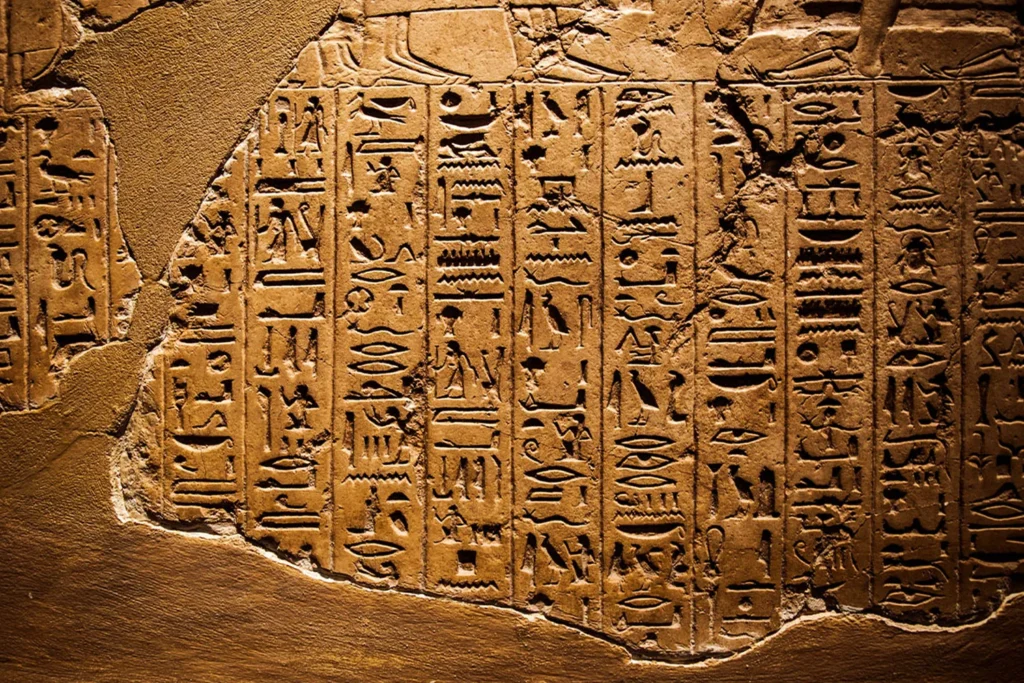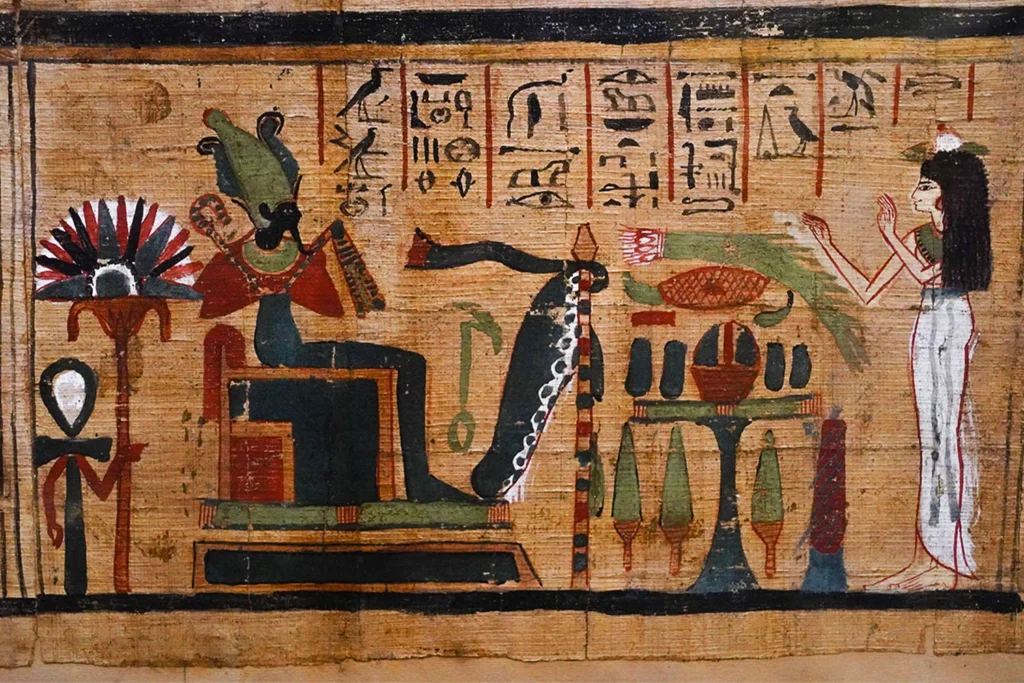Almost everyone would love to see the ancient remains that today symbolize Egypt with their own eyes. This is why the pyramids in Giza are so popular among tourists. Fortunately, there is another attraction nearby that reveals fascinating insights into the ancient Egyptian civilization.
The Grand Egyptian Museum, also known as GEM, will be the largest museum in the world dedicated to a single civilization. It will be, because while some rooms and exhibition halls are already open to the public, visitors are still waiting for the full exhibition to be launched.
The institution is located in Giza, near the famous pyramids, and is set to be connected to them by a long walkway. Recently, more information about the museum’s exhibitions has been revealed, as the authorities have decided to showcase some parts of the collection to the world even before the official opening. Thanks to this, we already have some insights not only into the history of the museum’s construction but also its interior layout.
The turbulent history of the museum
A global competition for the design of the new museum complex was announced in January 2002. Just a month later, the foundation stone was ceremoniously laid at the construction site, just two kilometers from Egypt’s most significant monuments. And that was about as far as things went smoothly. Further progress wasn’t as quickly visible.
The construction of the Grand Egyptian Museum began in earnest in 2005, but environmental and financial issues, as well as social unrest, caused significant delays. In early 2011, the Arab Spring halted work on the museum, and although the project quickly got back on track in 2014 after the government’s stabilization, we are still waiting for the official inauguration.
When will the Grand Egyptian Museum open?
The first planned opening date announced by the Egyptian government was early 2018. Further complications pushed this date to 2019, though few took this date seriously.

As of now, the grand opening of one of the largest museums in the world is scheduled for late 2024, and all indications suggest that this goal will be achieved. Reportedly, the final preparations are being closely monitored by Egypt’s Prime Minister and the Ministry of Tourism. This means that those of you planning to visit Egypt at the end of the year may have the chance to see the new museum in its full glory. However, while specific inauguration dates are still not being announced, in a way, the museum can already be visited today.
On October 16, 2024, a so-called trial opening took place, allowing the first guests to see several exhibition halls after booking tickets in advance. According to the plan, more rooms will be gradually opened to the public, and by the end of the trial period, visitors will be able to see up to 12 halls filled with exhibits. For tourists, this is an opportunity to glimpse the interior of the largest museum dedicated to Egyptian civilization before its official opening, and for the authorities, it serves as a way to test the readiness of the facility and gather feedback from visitors.
However, it has already been confirmed that this pre-opening visit will not include the much-anticipated display the world is waiting for. The never-before-exhibited complete treasure of Tutankhamun, consisting of over 5,000 items, is set to be the museum’s greatest pride. Unfortunately, it will only be revealed to the public after the official opening of the Grand Egyptian Museum.
Vision of the Grand Egyptian Museum
The new Grand Egyptian Museum will be the largest archaeological museum complex in the world. The entire structure, as can be seen from the outside, is based on a pyramidal shape. This design choice is not limited to triangular decorations but also extends to the overall shape of the building and its individual halls. The museum will house and display over 100,000 artifacts. Most of these will be some of the greatest ancient treasures entrusted to Egypt, ranging from prehistoric findings to relics from the time of the pharaohs and more modern periods of Egyptian history.

One of the museum’s biggest highlights will be the world’s first exhibition showcasing the entire collection of Tutankhamun’s treasures. We are also likely to see displays dedicated to the burial equipment of Queen Hetepheres I and the famous solar boats of Cheops. All exhibitions will be organized using the latest technologies, including artificial intelligence. Interestingly, the museum will also feature a dedicated children’s area, conference halls, a training center, and an extensive conservation center for artifacts.
What can you see at the Grand Egyptian Museum?
At the main square leading to the entrance, you will find a suspended obelisk. It serves not only as a decorative piece but also as a gathering spot for group tours. Upon entering the building, you’ll pass through the Grand Lobby and the Glass Lobby. Towering over the main atrium is an impressive statue of King Ramses II, and right behind it, you’ll see two statues of a king and queen from the Ptolemaic era. Additionally, there is a unique column of King Merenptah, depicting scenes from his victory over the Libyan tribes.
The museum tour will also take you through the Grand Staircase, which measures 64 meters in length and 24 meters in height. It is adorned with 72 artifacts, divided into four thematic areas: royal imagery, divine houses, gods, and the journey to the afterlife. These are intended to showcase a cross-section of ancient Egyptian history. The staircase journey leads visitors to a remarkable spot. At the top of the stairs, there is a sort of observation point. Through a spectacular glass wall, an extraordinary view of the famous pyramids unfolds.
The exhibition halls, open during the trial phase, additionally display nearly 15,000 artifacts and works of art from various periods of Egyptian history. Visitors also have access to part of the gardens, a shopping area, and cafés. Interestingly, the museum’s shops not only offer souvenirs and miniatures of artifacts but also boutiques from globally renowned Egyptian brands.
GOOD TO KNOW: If ancient Egyptian history particularly fascinates you, you might also consider making a stop near the city of Luxor during your journey through Egypt. It is home to the famous Valley of the Kings, the burial site of pharaohs and their families.
Before You Buy a Ticket
Thanks to the trial tours introduced in October, you can now explore a significant portion of the museum. While a full tour is not yet possible, to see the museum from the inside, you’ll still need to purchase a ticket (this time slightly more expensive than when only the staircase and lobby were accessible). It might be worth considering a guided tour, organized, for instance, through the GetYourGuide platform.
Most of these tours offer additional conveniences, such as hotel transportation or audio guides. However, if you decide to buy a ticket on your own, be mindful of the categories, as foreign visitors are subject to different ticket prices than locals. Also, remember to bring identification, as it is carefully checked at the entrance.
Practical information
- It is best to purchase tickets for the Grand Egyptian Museum in advance. This way, you can avoid standing in long lines and reduce the risk of tickets being sold out.
- Address: X4VF+V38, Cairo – Alexandria Desert Rd, Kafr Nassar, Al Haram, Egypt
- Buy tickets on GetYourGuide